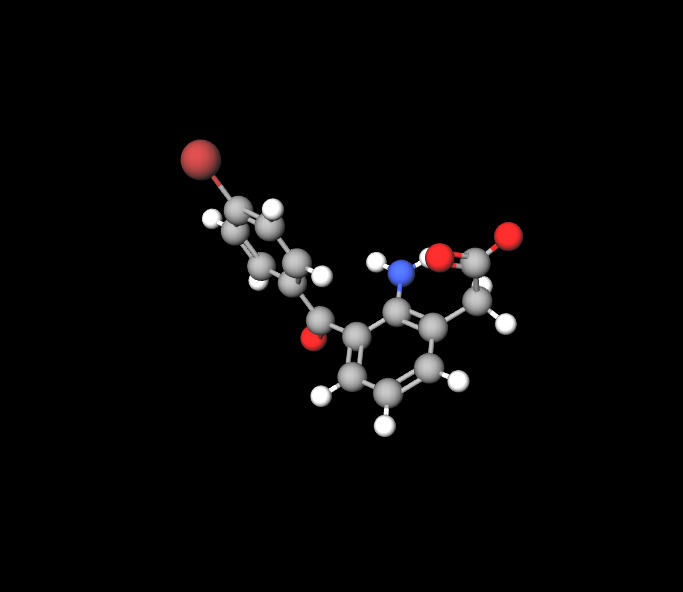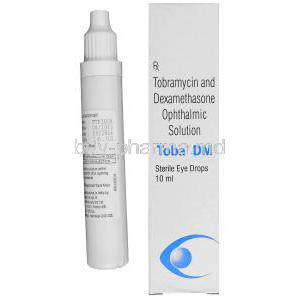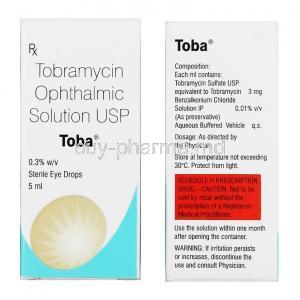Bromfenac Sodium
- 1. Introduction to Bromfenac Sodium
- 2. Uses of Bromfenac Sodium
- 3. How Bromfenac Sodium Works
- 4. Dosage and Administration of Bromfenac Sodium
- 5. Composition of Bromfenac Sodium
- 6. Side Effects of Bromfenac Sodium
- 7. Off-label Uses of Bromfenac Sodium
- 8. Bromfenac Sodium Storage Guidelines
- 9. Drug Interactions with Bromfenac Sodium
- 10. Warnings and Precautions for Bromfenac Sodium Use
- 11. Contraindications of Bromfenac Sodium
- 12. Careful Administration of Bromfenac Sodium
- 13. Important Precautions for Bromfenac Sodium
- 14. Administration of Bromfenac Sodium to Specific Populations
- 15. Overdosage of Bromfenac Sodium
- 16. Handling Precautions for Bromfenac Sodium
1. Introduction to Bromfenac Sodium
Overview of Bromfenac Sodium
Bromfenac Sodium is a nonsteroidal inflammatory drug (NSAID) mainly utilized in eye medicines to reduce inflammation and relieve pain effectively through eye drops. It is predominantly rather than orally taken medication, like tablets or capsules, as commonly seen with other NSAID medicines administered through the mouth or injection method instead of being applied directly to the eyes. It specifically targets enzymes linked to prostaglandin creation that leads to reduced inflammation levels in eye tissues, alleviating pain and swelling in ocular regions where it is needed most for relief purposes.

History and Development
In the 1990s, Bromfenac Sodium was initially created as a type of NSAID to improve localized pain relief while minimizing overall side effects in the ongoing development of pain management solutions. Its usage has been rising since then in post-surgery eye care because of its potent anti-inflammatory and pain-relieving qualities.
Therapeutic Classification: NSAID
Bromfenac Sodium is a type of inflammatory drug (NSAID). Its mechanism of action involves blocking the enzyme cyclooxygenase-1 (COX-1) and cyclooxygenase-2 (COX-2). This blocking action reduces the production of prostaglandins, which play a role in managing pain relief and reducing fever and inflammation in the body.
FDA Approval and Regulatory Status
The FDA has given the green light for Bromfenac Sodium to be used in the eyes to help with inflammation after eye surgery. Its use is closely monitored to ensure that it's safe and works well in authorized situations.
2. Uses of Bromfenac Sodium
Primary Indications
This medication, Bromfenac Sodium, is primarily prescribed to address inflammation and pain in the eye following cataract surgery. It falls under the category of inflammatory drugs (NSAIDs).
3. How Bromfenac Sodium Works
Mechanism of Action
Bromfenac Sodium operates by blocking both COC I and COC II enzymes. These enzymes play a role in the production of prostaglandin, which causes inflammation and pain. By hindering their functions, bromfenac sodium reduces both inflammation and discomfort.
Anti-inflammatory and Analgesic Effects
Bromfenac works by reducing the production of prostaglandins, which provides inflammatory and pain-relieving benefits that are particularly useful for managing pain and inflammation after surgery.
Ocular Pharmacokinetics: Absorption and Action in the Eye
When Bromfenac Sodium is given as eye drops, it quickly enters the eye tissues, where it works to decrease inflammation in a targeted manner without spreading it throughout the body and causing side effects.
4. Dosage and Administration of Bromfenac Sodium
Standard Dosage Guidelines
The usual instruction is to put one drop of Bromfenac Sodium into the affected eye(s) twice a day as needed, depending on how severe the issue is and how well the patient is responding to the treatment.
Recommended Dosage for Adults
Dosage Adjustments for Special Populations
Elderly individuals might need changes in medication dosages depending on their well-being and how their eyes respond to the treatment. If you have any existing health conditions or are currently on medications, it's advisable to seek advice from a doctor regarding tailored dosage modifications.
Administration Instructions
To correctly apply the eye drops, tilt your head backward and gently pull down your eyelid. Please apply the drops without letting the dropper touch any surface to prevent contamination.
Duration of Treatment
Patients are usually advised to take Bromfenac Sodium for 7 to 14 days based on their health status and how they are responding to treatment.
Missed Dose Protocol
If a patient forgets to take a dose of medication and remembers when it's not too far from the scheduled dose time, they should skip the missed dose to prevent taking two doses close to each other.
5. Composition of Bromfenac Sodium
Active Ingredients
The key element in this medication is Bromfenac Sodium, which contributes to its inflammatory effects.

Inactive Ingredients and Formulations
Eye drop solutions contain components such as sodium chloride and boric acid that help stabilize the formulation.
Eye Drop Preparations
Typically found in 0..09 percent ophthalmic solutions, bromfenac is used on the eyes.
Preservatives and Their Role in the Formula
Some solutions contain preservatives to keep them sterile. For those who are sensitive to such additives, there are also preservative-free alternatives.
Bromfenac sodium sesquihydrate
The sesquihydrate form of bromfenac sodium salt is commonly employed to alleviate eye discomfort and address inflammation following cataract surgery in patients.
6. Side Effects of Bromfenac Sodium
Common Side Effects
- Feeling a burning or stinging sensation when applying the medication.
- Sensitive to light for a period of time.
- Eyesight is not quite clear.
Serious Side Effects
Extended eye use can harm the layer of the cornea, known as Corneal Erosion. Rarely, patients might encounter allergic reactions, like swelling and itchiness.
Long-term Use Considerations
Prolonged or improper usage of Bromfenac Sodium could result in issues like slowed healing processes and worsening of existing eye conditions due to thinning.
7. Off-label Uses of Bromfenac Sodium
Potential Use in Other Eye Conditions
Researchers are continuously investigating the potential of Bromfenac Sodium to treat eye conditions in addition to its currently approved uses.
Experimental Use in Chronic Inflammatory Diseases
Off-label Use in Postoperative Pain Management Beyond Ocular Surgery
A few experts have looked into Bromfenac Sodium as a method, for pain relief following surgeries not related to the eyes; however this is still considered an experimental method.
8. Bromfenac Sodium Storage Guidelines
Optimal Storage Conditions
Store Bromfenac Sodium at room temperature, which is generally around 15°C to 25°C (59°F to 77°F).
Temperature Recommendations
Extreme temperatures, like cold weather, can reduce the effectiveness of medicine. It's important to keep the medicine from getting too cold or too hot to ensure its effectiveness.

Protecting from Light and Moisture
Keep Bromfenac Sodium in a place out of sunlight to ensure its stability.
Shelf Life and Expiry Considerations
Make sure to look at the expiration date, on the bottle and use the solution within four weeks after opening it as, per the instructions.
Safe Disposal Practices
You should follow the guidelines for disposing of unused medication and avoid improper methods, such as flushing it down the drain.
9. Drug Interactions with Bromfenac Sodium
Interaction with Other Ophthalmic Drugs
When using eye medications together for treatment purposes, it is advisable to wait for at least 5 minutes between each application to avoid any potential interactions between the drugs.
Systemic Drug Interactions
While Bromfenac is typically intended for eye treatment, when it is absorbed in large amounts into the body, it still has the potential to interact with medications taken orally or systemically.
Interaction with Anticoagulants
Bromfenac Sodium and other NSAIDs could potentially lead to a risk of bleeding when taken alongside anticoagulants.
NSAIDs and Blood Pressure Medications
Patients who are, on blood pressure medication need to be careful because NSAIDs could decrease the effectiveness of drugs.
Effects of Combining with Other NSAIDs
Using NSAIDs at the time can heighten the chances of experiencing negative impacts, like issues with the stomach and kidneys.

10. Warnings and Precautions for Bromfenac Sodium Use
Risk of Corneal Damage
Extended use of Bromfenac Sodium has been linked to a risk of injury in people with corneal conditions or diseases present before treatment began. Ongoing eye checkups are crucial to watch out for any indications of thinning or erosion. It is recommended that patients stop taking the medication upon detection of damage.
Potential for Allergic Reactions
Some people might experience reactions to Bromfenac Sodium, which can vary from discomfort to more serious responses, such as swelling or itching on the skin surface, in addition to redness.
Warning on Use with Contact Lenses
People who wear contact lenses should be informed about how their medication can affect them. Bromfenac Sodium has the potential to heighten the chances of contamination on the lenses, which could result in infections or discomfort. It is recommended that individuals take out their contact lenses before using the medication and wait 15 minutes before putting them back in.
Monitoring Ocular Health During Long-term Use
Regularly monitoring eye health is essential when using Bromfenac Sodium over a period of time, as it could hide issues or make them worse without detection in time, causing delayed healing or increased inflammation risks that can be identified early through frequent checkups with an eye specialist.
11. Contraindications of Bromfenac Sodium
Absolute Contraindications
Hypersensitivity to Bromfenac or NSAIDs
People who have a history of being highly sensitive to Bromfenac or any other NSAIDs should steer clear of using it due to the chance of experiencing severe allergic reactions, which outweigh any possible medical advantages.
Patients with Active Peptic Ulcer Disease
Due to the potential of NSAIDs to worsen stomach problems like ulcers, bromfenac sodium should be avoided in individuals with existing ulcers despite its topical administration, as there is still a possibility of systemic absorption that could worsen ulcer conditions.

Relative Contraindications
History of Asthma or Allergic Reactions to NSAIDs
Patients who have had asthma or allergic reactions from NSAIDs should undergo an assessment before taking Bromfenac to mitigate any respiratory issues despite the low probability of systemic effects and the risk of exacerbating breathing problems.
Severe Renal or Hepatic Impairment
People with kidney or liver issues should be cautious when using Bromfenac Sodium as even though the medication is applied chiefly topically, there may be some risk of it getting into the bloodstream and causing problems for those with weakened liver or kidney functions.
12. Careful Administration of Bromfenac Sodium
Special Considerations for Patients with Pre-existing Ocular Conditions
Individuals with existing eye conditions, such as dry eye syndrome or corneal dystrophies, should be careful when using Bromfenac Sodium medication, as these conditions might make them more sensitive to it or lead to complications that need monitoring.
Adjustments for Patients on Anticoagulant Therapy
When patients are taking blood thinners and Bromfenac Sodium at the time it's essential to be cautious as NSAIDs can enhance the effects of blood thinners, which may raise the risk of bleeding if the medication is absorbed into the system.
Monitoring Patients with Autoimmune Disorders
People with conditions like arthritis or lupus might have different reactions to NSAIDs such as Bromfenac Sodium. They should be carefully observed for any unexpected responses or worsening of their condition while undergoing treatment.
13. Important Precautions for Bromfenac Sodium
Avoiding Overuse or Prolonged Use
In order to prevent outcomes, it is crucial for patients to follow the recommended dosage and duration exactly as instructed. Using Bromfenac Sodium excessively or for a period of time can result in eye issues such as delayed wound healing or thinning of the cornea.
Monitoring for Early Signs of Side Effects
It's important to let patients know the significance of keeping an eye out for signs of reactions, like heightened redness or irritation and changes in vision. Reporting these symptoms promptly can lead to assistance and potentially prevent more serious complications.
Advice for Patients with Known Drug Sensitivities
People who have experienced reactions to drugs in the past should be carefully evaluated before starting treatment with Bromfenac Sodium, and other options should be explored for individuals with a likelihood of responses or negative outcomes from the medication.
Discontinuation Protocol if Side Effects Occur
If patients encounter side effects while using Bromfenac Sodium medication, they may be required to stop using it. In these situations, doctors should suggest treatment options and maintain regular checkups to oversee the patients' progress.
14. Administration of Bromfenac Sodium to Specific Populations
Elderly Patients
Adjusted Dosage Recommendations
Elderly individuals may need changes in medication doses because they are more prone to side effects and may have health conditions to consider. Careful supervision is crucial to guarantee that the treatment is both safe and successful.
Potential Increased Sensitivity to Side Effects
Older individuals might experience sensitivity to the reactions of Bromfenac Sodium, such as an elevated chance of eye damage or absorption throughout the body. It's advised to be cautious with dosing and to regularly check the health of the eyes.
Pregnant Women and Nursing Mothers
Safety Profile During Pregnancy
The safety of Bromfenac Sodium during pregnancy is not definitively confirmed yet. Even though it is absorbed into the system, it is advisable to be cautious. This caution should be exercised in the trimester as NSAIDs could potentially impact fetal circulation.
Risks During Lactation
Nursing mothers are advised to talk to a healthcare provider before using Bromfenac Sodium to check for any risks to their baby through breastfeeding since the drug is absorbed into the system in amounts.
Children and Adolescents
Pediatric Dosage Guidelines
In children's settings, it is recommended to reserve the use of Bromfenac Sodium for cases only, ensuring that the dosage is precisely adjusted based on the child's age and weight. And emphasize the importance of minimizing exposure to the medication.
Safety and Efficacy in Younger Patients
The safety and effectiveness of Bromfenac Sodium in patients have not yet been thoroughly researched. It is typically advised to be used under medical monitoring to ensure that the advantages outweigh the potential risks.
15. Overdosage of Bromfenac Sodium
Symptoms of Overdosage
Local Ocular Effects
Using too much Bromfenac Sodium can cause problems in the eyes, such as irritation, redness, or damage to the cornea area. Patients should be told to see a doctor if they have any strange symptoms.
Systemic Effects (if absorbed in large quantities)
In some cases of absorption into the system, individuals might encounter issues, like stomach discomfort or kidney problems, especially when combined with NSAIDs.
Emergency Treatment for Overdose
In case of an overdose incident occurs, it is suggested to rinse the eyes with either water or a saline solution. Patients should get in touch with their healthcare provider for advice. They may need a medical assessment based on how serious the symptoms are.
Long-term Risks of Overuse
Excessive use of Bromfenac Sodium over time can result in issues like damage to the cornea, slower wound healing, and a higher chance of developing secondary infections. It is important to educate patients about the dangers of not following their treatment regimens.
16. Handling Precautions for Bromfenac Sodium
Proper Handling of Eye Drop Bottles
Handle the Bromfenac Sodium eye drop bottles carefully to maintain the medication's effectiveness and safety. Be cautious not to let the dropper tip come into contact with any surface to prevent contamination and reduce the risk of infections.
Avoiding Contamination of the Dropper Tip
Patients should remember not to let the dropper tip touch their eyes or surfaces with their hands to prevent contamination that can cause eye infections.
Safe Disposal of Unused Medication
To dispose of Bromfenac Sodium that has expired or not been used correctly according to medication disposal guidelines is crucial to avoid health hazards and environmental damage.
Recommendations for Traveling with the Medication
When you are on a trip or journeying somewhere new, make sure to store Bromfenac Sodium at room temperature, keeping it safe from heat or cold. It's advised to bring along your prescription or a note from the doctor to make it easier to carry the medication during travels.
Bromfenac Sodium FAQ
Is bromfenac sodium a generic?
Generic Name: Bromfenac
What is bromfenac sodium used for?
Ophthalmic NSAIDs, like Bromfenac, are commonly employed to alleviate pain and reduce eye inflammation, serving as an element in managing ocular discomfort and swelling effectively.
What is bromfenac sodium?
After undergoing cataract surgery, Bromfenac eye drops/solution Thats used to relieve eye pain or inflammation). It is a type of inflammatory medication that you can only get with a prescription from your doctor.
What is bromfenac sodium drops?
After cataract surgery, doctors prescribe bromfenac solution to effectively relieve eye pain or reduce swelling. Bromfenac is an anti-inflammatory drug applied topically.
































